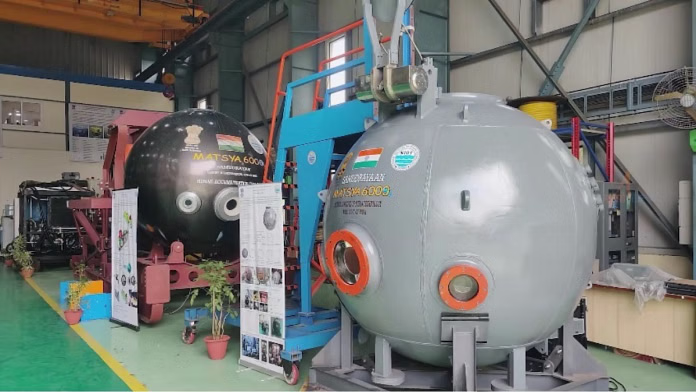Major Technological Milestone for Samudrayaan Deep Ocean Mission

Major Technological Milestone for Samudrayaan Deep Ocean Mission
India achieved a critical breakthrough in its Deep Ocean Mission (DOM) with the completion of a key weld on the Matsya-6000 submersible—the human-rated vessel designed to carry aquanauts to depths of 6,000 metres. This milestone, accomplished jointly by the National Institute of Ocean Technology (NIOT) and the Indian Space Research Organisation (ISRO), demonstrates India’s advancing capabilities in deep-sea engineering and materials science.
Key Highlights for UPSC Analysis:
- Mission Overview:
- Samudrayaan is India’s first crewed deep-sea mission under the broader Deep Ocean Mission.
- The mission will take aquanauts to 6,000 m depth using Matsya-6000, a spherical titanium-alloy submersible with diameter 2,260 mm and wall thickness 80 mm.
- Matsya-6000 is designed to withstand external pressures up to 600 bar and temperatures as low as -3°C.
- Technological Achievement:
- Key weld completed using Electron Beam Welding (EBW)—a first-of-its-kind human-rated deep-sea weld in India.
- Achieved after nearly 700 trials, welding 80 mm thick titanium walls over 7,100 mm length in 32 minutes.
- EBW technology is commonly used for spacecraft and nuclear-grade components, highlighting cross-sectoral innovation.
- Challenges Addressed:
- Titanium’s high reactivity with oxygen and nitrogen poses risks of porosity and embrittlement, requiring precise control.
- Development of a high-energy 7.5 MeV X-ray radiography facility enabled non-destructive evaluation (NDE) essential for human-rated certification.
- Multiple NDE techniques applied: Time of Flight Diffraction (TOFD), Dual Linear Array (DLA), and Phased Array Ultrasonic Testing (PAUT).
- Institutional Contributions:
- ISRO’s Liquid Propulsion Systems Centre (LPSC), Bengaluru: Developed the EBW process, augmented EBW machine from 15 kW to 40 kW, modified chemical cleaning/handling systems.
- NIOT: Contributed design and operational expertise for deep-sea submersible.
- Collaboration demonstrates convergence of space-grade technologies with ocean engineering.
- Strategic & UPSC Relevance:
- Science & Technology: Materials science, human-rated submersibles, deep-sea engineering.
- Governance & Policy: Blue Economy, indigenous technology development, cost-effective R&D.
- International Significance: India joins a small group of nations capable of manned deep-sea exploration beyond 6,000 m.
- Environment & Economy: Enables sustainable ocean resource exploration, seabed mineral research, and marine science advancement.
Conclusion:
The completion of the key weld on Matsya-6000 marks a historic step towards India’s crewed deep ocean exploration, aligning with the country’s broader goals of technological self-reliance, blue economy leadership, and scientific innovation. For UPSC aspirants, this mission illustrates the integration of advanced technology, institutional collaboration, and strategic maritime ambitions.
Updated - 23 July, 2025 07:35 pm | The Print